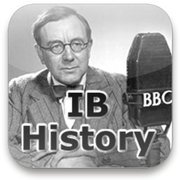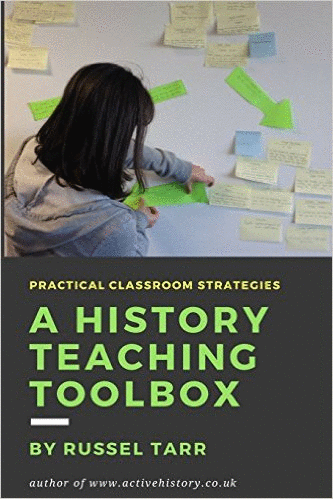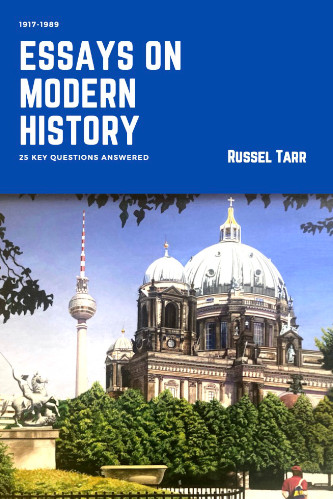IB History: ActiveHistory
An ActiveHistory subscription provides everything you need to construct and deliver a two-year IBDP History course from start to finish using the ActiveHistory IB History Hub.
These consist not just of lesson plans, worksheets and teacher notes, but also multimedia lectures and interactive games and historical simulations ideal for remote learning and self-study.
Use the ActiveHistory curriculum maps and the ActiveHistory syllabus topics to design your own course effectively.
We also have you covered for the Internal Assessment, Extended Essay and Theory of Knowledge in History, not to mention Essay and Sourcework Skills, IBDP History Model Essays and IBDP History Sample Sourcework Exercises / Model answers!
SUBSCRIBE NOW REQUEST A FREE TRIAL
 Assessment in IB History
Assessment in IB History
Overview
History at IB is a two-year course which, unlike the
AS/A2 model, has no external assessment element midway through the course.
Students choose to study History either at Standard Level or at Higher Level.
All of these students produce an Internal Assessment (IA) on a topic of their
choice during the course, and sit for two examination papers: Paper 1 consists
of four sourcework questions, whilst Paper 2 requires students to write two
essays. Higher Level students additionally have to study some extra topics for
Paper 3, which involves the production of a further three essays. This means
that the overall grade for Standard Level and Higher Level students is calculated
differently:
Assessment Grid for IB History |
||
Standard Level |
Higher Level |
|
Internal Assessment |
25% |
20% |
Paper 1 (60 mins) |
30% |
20% |
Paper 2 (90 mins) |
45% |
25% |
Paper 3 (150 mins) |
35% |
|
1. Sourcework
Paper
1
[Student Handout: Tips for IB History Sourcework]
At the time of writing, the IB board has not made
available any sample papers for the new syllabus. However, it is unlikely that
they will substantially change the existing approach of each paper. With this
qualification in mind, up until now Paper 1 has consisted of five accessible
sources; written sources are rarely more than 200 words long, and there is
usually at least one visual source such as a cartoon or photograph among these.
The four questions, adding up to 25 possible points, follow a predictable
format, with a clear markscheme:
1a. "Why, according to Source A,..." (3 marks);
1b. "What message is conveyed by Source B..." (2 marks);
2. "Compare and contrast the views expressed by
Sources C and D..." (6 marks);
3. "With reference to their origins and purpose,
assess the values and limitation of source A & D to this historian
studying..." (6 marks);
4. "Using the sources and your own knowledge, explain
to what extent you agree that..." (8 marks).
2. Essays
[Student Tips: IB History Essay Skills]
[Student Tips: "Challenging the assumptions of the question" in Level 7 of the mark scheme]
Paper
2
This examination paper is traditionally divided into
five sections of five questions each. Students will be required to answer two
questions chosen from different sections of the paper, hence the requirement
that students study at least two of these topic sections in depth (see below).
The five questions within each section will range from the narrowly specific
("To what extent was the rise to power of either Hitler or Mao due to personal
appeal and ability?") to the very open-ended ("Assess the importance of
ideology for rulers of twentieth century single party states"). Another popular
style of question in Paper 2 involves the comparison of different regions
("Analyse the foreign policy of two rulers of
single-party states, each chosen from a different region.").
This genuinely synoptic approach to History – chronologically,
geographically and thematically – is one of the most challenging but
stimulating aspects of the IB course.
Paper
3
Higher Level students only sit this paper. The IB
board produces several Paper 3 examination papers, each of which tests
knowledge of a different world region (for example Europe and the Middle East,
the Americas). The teacher will declare in advance which of these papers his or
her students will be sitting – in my case, I teach towards the European
paper. The paper consists of a list of 25 essay questions covering up to 200
years from which candidates must answer 3. In contrast to Paper 2, these
questions are not organised into themes, and are not particularly synoptic in
nature: instead, they are in-depth questions on particular topics ("What
were the main causes of the Spanish Civil War?", "Compare the roles
of Trotsky and Lenin in the October Revolution and the formation of the Soviet
State to 1924").
The
Internal Assessment
[dedidcated section containing guidance, markschemes and sample assessments]
The Internal Assessment at IB History level is an individual study which accounts for 20% of final mark for Higher Level students, and 25% for Standard Level students. It is a study of 1500-2000 word essay on a topic of the student's own choice. This personal study of 1500-2000 words is often the
most enjoyable part of the course for many students. It is divided into very
clear sections – an introduction, a summary of evidence, an evaluation of
sources, an analysis and so on – each of which has a recommended word
limit and its own clear mark scheme. In comparison to many A-Level personal studies,
the topic theme for the Internal Assessment (IA) does not need to be confined
to the period, region or themes being tested in the external examinations.
Students may be working towards an exam focusing heavily on Modern European
History, but could choose as their IA a question on Medieval Asian History. In
the past, popular choices of study have been based around novels, films or works of art
("How useful is the art of George Grosz to the historian of Weimar
Germany?") or personal interviews ("Does oral testimony substantiate
the view that life in East Germany got worse following the fall of
Nazism?"), but more studies based on more traditional themes ("How
significant was Harriet Tubman in the American abolition movement?") are
also perfectly acceptable.

© 1998-2024 Russel Tarr, ActiveHistory.co.uk Limited (Reg. 6111680)
1 Torrin Drive, Shrewsbury, Shropshire, SY3 6AW, England
All rights reserved | Privacy Policy | Contact







